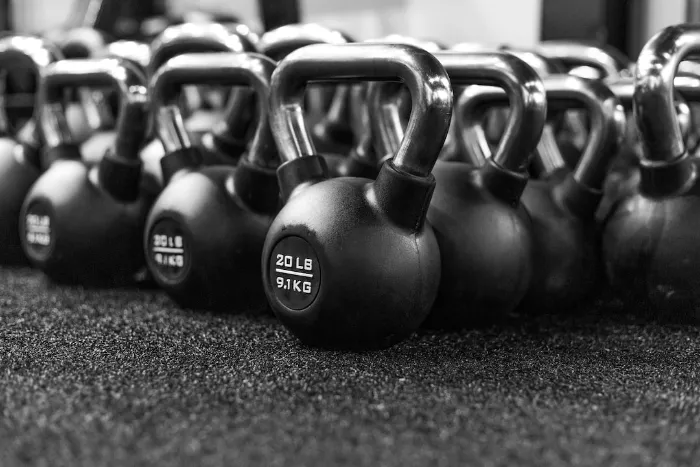How to choose the right kettlebell weight!

-
For those new to kettlebell training
-
Understanding Kettlebell Weight Classes
-
Factors Influencing the Right Weight Choice
-
Common Mistakes in Choosing Kettlebell Weights
- Q and A
For those new to kettlebell training
Starting weights: Men often begin with 16kg, while women might start with 8kg or 12kg. However, these are general guidelines, and individual capacities vary.
Listening to one's body: It's essential to recognize when a weight feels too light or too heavy and adjust accordingly. The body's feedback is invaluable in preventing injuries and ensuring effective training.
Introduction
Kettlebell training, with its origins in ancient Russia, has become a staple in modern fitness regimens. Its unique design and versatile use make it a favorite among fitness enthusiasts. However, the cornerstone of effective kettlebell training lies in selecting the appropriate weight.
Understanding Kettlebell Weight Classes
There are two primary types of kettlebells: traditional and competition. Traditional kettlebells vary in size with weight, while competition kettlebells maintain a consistent size but differ in color to indicate weight. Common weight increments include 8kg, 12kg, 16kg, 20kg, 24kg, and 32kg, among others, with each weight tailored to different skill levels and training objectives.
Factors Influencing the Right Weight Choice
Individual fitness level and experience: A novice might start with a lighter kettlebell to master the form, while a seasoned athlete might opt for a heavier weight to challenge their limits.
Intended exercise type: Some exercises, like kettlebell swings, might allow for a heavier weight due to the momentum, while others, such as the Turkish get-up, require more control and often a lighter weight.
Training goals: Those aiming for strength might lean towards heavier kettlebells with fewer repetitions, while endurance training might involve lighter weights and more repetitions. Flexibility exercises, on the other hand, require weights that allow for a full range of motion.
Common Mistakes in Choosing Kettlebell Weights
Selecting the right kettlebell is not just about physical capacity but also about ensuring safety and efficiency. Common pitfalls include:
Overestimating one's capacity: Lifting too heavy too soon can lead to injuries.
Neglecting form for heavier weights: A heavier kettlebell can compromise form, leading to inefficient workouts and potential injuries.
Ignoring the importance of progression: It's crucial to gradually increase weight as one's strength and technique improve.
In conclusion, the right kettlebell weight is not a one-size-fits-all answer. It requires a combination of understanding one's body, recognizing the purpose of the exercise, and being aware of the different weight classes available. With the right weight in hand, kettlebell training can be a transformative fitness tool.
Q and A
Q: Why do competition kettlebells maintain a consistent size regardless of weight?
A: Competition kettlebells are designed for consistency in grip, handling, and technique across different weight categories. This uniformity ensures that athletes can transition between weights without having to adjust to a different size or shape, allowing them to focus solely on the weight difference.
Q: I've been using a 12kg kettlebell for a while and feel comfortable. When should I consider moving to a heavier weight?
A: If you find that your current exercises are no longer challenging, or you can easily complete more repetitions than recommended without fatigue, it might be time to progress to a heavier kettlebell. Always ensure that you can maintain proper form and technique when transitioning to a heavier weight.
Q: Are there any specific signs or symptoms that indicate I'm using a kettlebell that's too heavy for me?
A: Yes. If you're compromising on form, feeling strain in your back or joints, unable to complete the recommended repetitions, or experiencing pain (beyond typical muscle soreness) after a workout, these could be indicators that the kettlebell is too heavy. It's essential to prioritize safety and technique over lifting heavier weights.
Q: Can I achieve the same fitness goals with a lighter kettlebell as I can with a heavier one?
A: It depends on the goal. Lighter kettlebells with more repetitions can be effective for endurance and toning. Heavier kettlebells with fewer repetitions target strength and muscle building. Both can be effective for calorie burning and cardiovascular fitness, depending on the intensity and duration of the workout.
Q: Is it beneficial to own multiple kettlebells of different weights?
A: Absolutely. Having a range of kettlebell weights allows for versatility in workouts, targeting different muscle groups, and adjusting to various exercises. As you progress
-
For those new to kettlebell training
-
Understanding Kettlebell Weight Classes
-
Factors Influencing the Right Weight Choice
-
Common Mistakes in Choosing Kettlebell Weights
- Q and A
